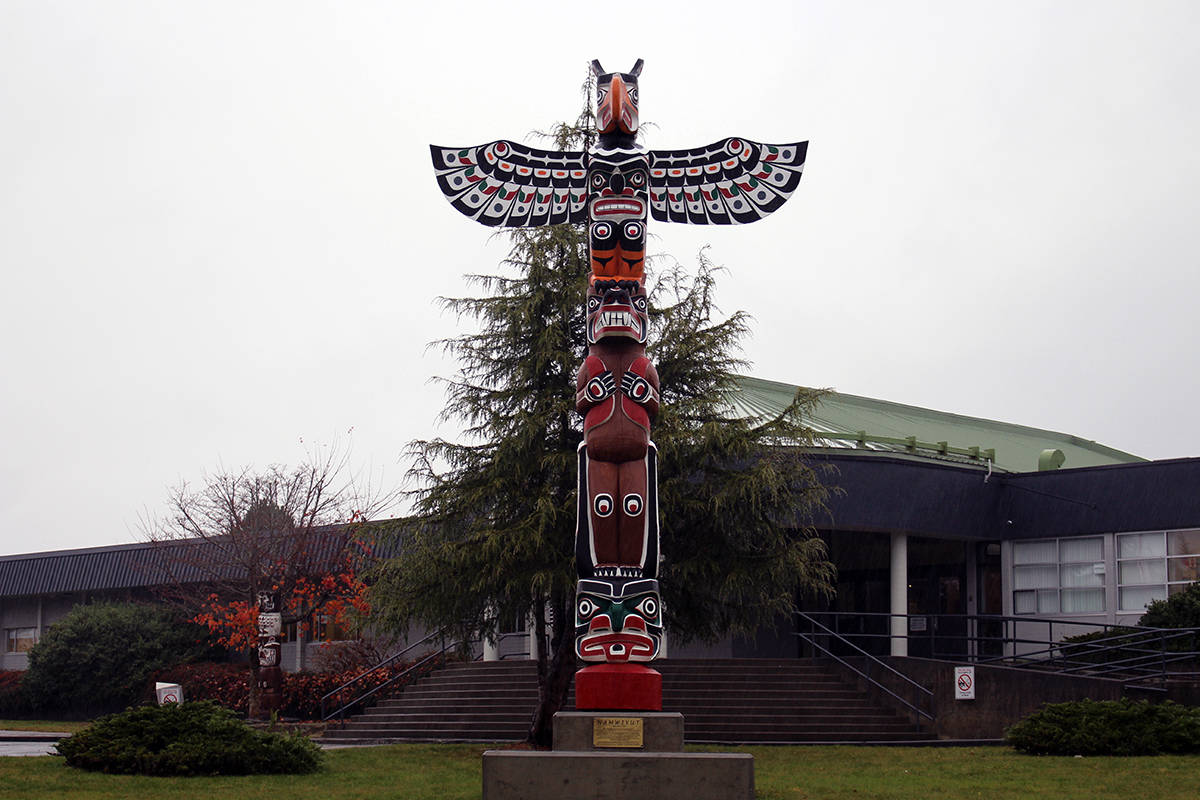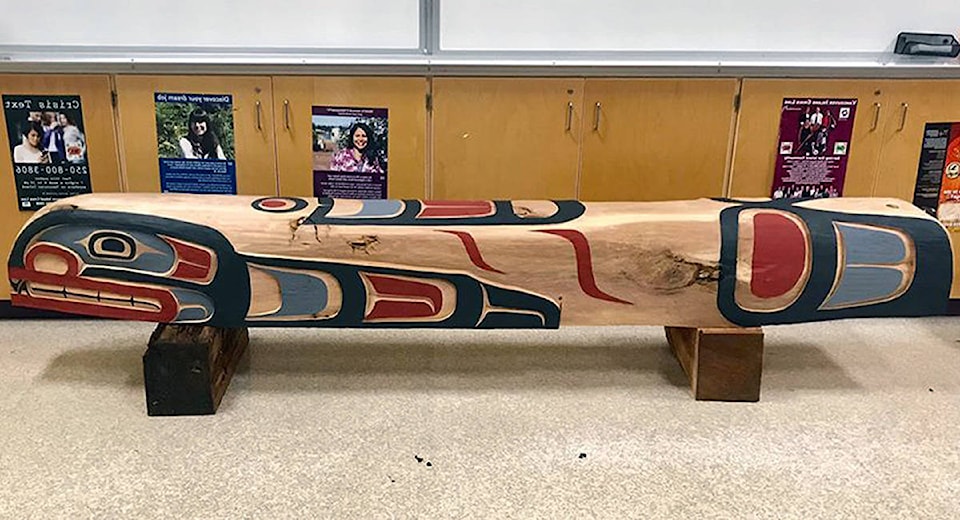Indigenous culture programs at local schools continue to be strong across the North Island.
School District 85 (SD85) revamped efforts for Port Hardy Secondary School and North Island Secondary School’s culture programs.
The programs come after reaching an enhancement agreement made with neighbouring First Nation communities in 2017. Aboriginal students will hopefully “experience a sense of belonging and respect through the recognition and honouring of their culture,” the 2017 report stated.
Port Hardy Secondary School
| THOMAS KERVIN PHOTO Baker taught students how to carve paddles. |
Eric Baker, who has Indigenous roots from Kingcome Inlet, Kwakiutl, and Squamish, is currently PHSS’ connections worker.
“We probably have about 15 students who come learn the dances and songs,” he said. “Before we start singing and dancing, we’ll say words out together so they understand it, then go into the break down of translations, and go into the hand movements.” He mentioned students need to understand the translations they know how to act during potlatches and feasts.
“We want to make sure they have the knowledge they need to share the story of the song or dance,” he added. It allows students to “understand who they are and where they come from. Genealogy is a really big thing when it comes to our culture.”
| THOMAS KERVIN PHOTO One NISS student painted this image of what looks like a Thunderbird. |
PHSS principal Rena Sweeney said the school “had the (language) class for a few years,” but since bringing in ‘Namgis First Nation hereditary chief William Wasden over the years, the Kwak’wala classes have seen a revitalization.
Baker mentioned Wasden “being as fluent as he is in our culture and our history really gave us the opportunity to work closely with these students. Just by having Wa part of our Kwak’wala class really stepped it up.”
Sweeney noted the program “had a lot of support from other (Indigenous) community members and Elders.”
Baker also runs a woodworking class for students who are interested in carving paddles. During that class, students “work with navigation through maps … on the water. One of the reasons why is because our ancestors and us today are water people,” he concluded. “When it comes to our culture and practices it was laid out before us by our ancestors.”
North Island Secondary School
Jay Dixon, principal at NISS, said “cultural identity … has grown considerably in a very short period of time. We are excited and motivated by the sense of pride our students now carry.” He added that the school is “also excited about the sense of curiosity, respect, and support our communities have for Kwakwaka’wakw culture.”
Dixon said the program is meant to build First Nations partnerships while also working together “to ensure our school reflects our region.” Since completion of NISS’ totem pole last year the culture classes have tripled in enrollment.
“The program was put out throughout the year,” Ida Miller, connections worker, said. “Now, as of last year, there’s a (language) class. Miller has roots to local First Nations communities and to First Nations in Campbell River.
Nina Mitchell, school counsellor and advisor for culture, history, and First Nations studies. The program includes “traditional aspects like singing and dancing,” Mitchell noted.
The school recently finished an Indigenous heritage project, which showcased how much the students came together because of culture. “They’re all connected - knowing who you are and who you’re connected to,” Mitchell concluded. “The culture program provides a grounding, (it) echoes through what has already been previously taught to them.”
| THOMAS KERVIN PHOTO NISS displays a number of Northwest Coast Indigenous artwork. |
“They need to have that sense of belonging, so that’s one our main (goals) in our class. It’s the freedom to sit down at our drum log and start singing a song,” Miller said.
“A lot of it is to form a solid cultural identity with the understanding of where we come from and where we’re going. That’s a lot of where we base our classes on. We’re connecting our students with Elders and community leaders and letting them have that voice.”

